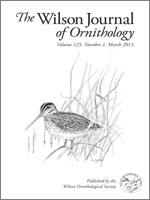We investigated the impacts of an unpaved road on the distribution, reproduction, and stress physiology of Mountain White-crowned Sparrows (Zonotrichia leucophrys oriantha) in a high-elevation subalpine ecosystem. We found and monitored 152 sparrow nests over 3 years and captured 123 sparrows over 2 years for standardized stress series experiments. Distance of a nest to the road was associated with reproductive success, and low success near the road was primarily because of high rates of nest desertion. The probability of a nest succeeding rose with increasing distance from road up to 40 m, but nests beyond 40 m experienced lower nest success, possibly because of increased predation. Nests at intermediate distance were approximately twice as likely to succeed (70% survival rate) as those near (36% survival) or far (37% survival) from the road. Stress response of male sparrows subjected to a standardized field stress protocol was elevated within 20 m of the road (38.34 ± 5.76 ng/ml) compared to those at greater distances (23.89 ± 2.01 ng/ml). Our study is the first to document the association between the distance to a road and blood corticosterone levels in any bird species. The results present strong evidence of impacts of a road on nest success of a migratory songbird. This relatively low-traffic, low-speed road clearly presents problems, even for a bird species not thought to be sensitive to disturbance.
How to translate text using browser tools
1 March 2013
Distance to a Road is Associated with Reproductive Success and Physiological Stress Response in a Migratory Landbird
Matthew S. Dietz,
Courtney C. Murdock,
L. Michael Romero,
Arpat Ozgul,
Johannes Foufopoulos
ACCESS THE FULL ARTICLE
Corticosterone
disturbance
reproduction
road stress
sparrow





